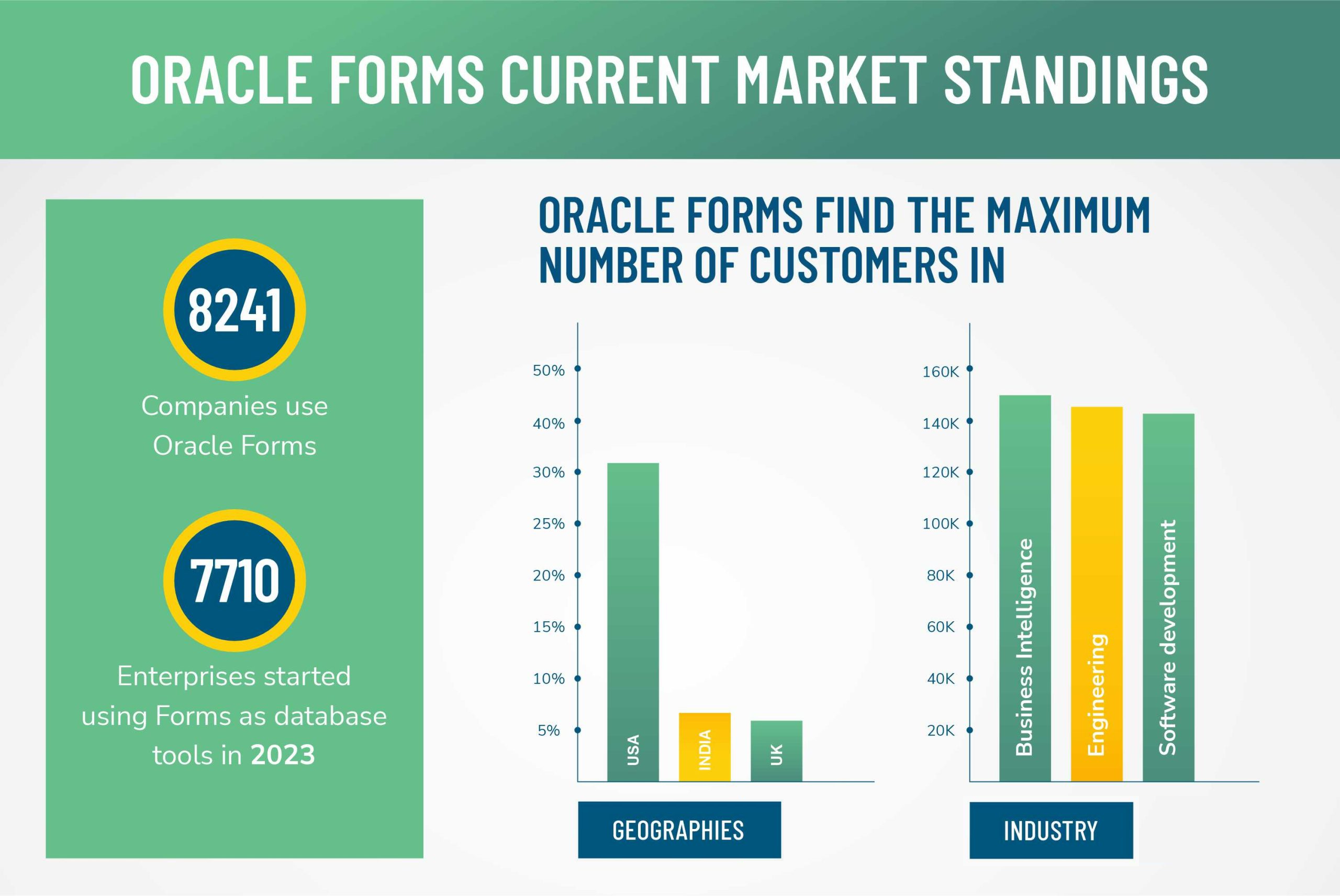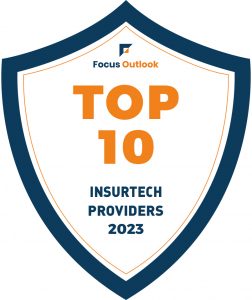Table of Contents
Introduction on the Need for Oracle Forms to Java Migration
Oracle Forms have been the anchor for numerous business applications across the globe. This robust application has been critical for application development for a dedicated customer base for decades. So, if everything was going well, what started pushing Oracle Forms Migration to Java?
The IT landscape has significantly changed. Newer technologies are increasingly drifting Oracle Forms to maintenance mode. These are more often branded as legacy software. Despite being the mainstay, Oracle Forms have several issues motivating organizations to migrate away from them.
To name a few:
- Connectivity issues lead to crashing (People using low-bandwidth connections often lose all unsaved data and have to start over).
- Oracle Forms are heavyweight and take time to load.
- These are not browser-friendly and deliver outdated graphical user interfaces (GUI).
- Finding resources takes time.
Organizations are going through a digital revolution. Their biggest challenge is to enhance Oracle Forms while maintaining agility in today’s mobile, user-focused era.
End of Life for Oracle Forms
Brief Timeline of Oracle Forms
Oracle Forms came to life as a Rapid Application Development tool. They simplified the development of applications to interact with the Oracle database more efficiently. As they used a popular query language, PL/SQL, they quickly became a preferred choice.
Oracle Forms saw the light of day with the name Interactive Application Faculty (IAF) in 1981. Later the name changed to FastForms, then SQL Forms, and the current name Oracle Forms came with version 4.0. Originally it was an independent product with a compiler and a runtime interpreter. Oracle Forms grew and evolved quickly.
The company released the latest version, Oracle Forms 12c, with the Fusion Middleware 12c in October 2015. It received multiple updates over time. The current version is 12.2.1.4.0, released in September 2019.
Most people consider it the end of the line for Oracle Forms. However, Oracle thinks differently.
Statement of Direction From Oracle
Regardless of the end-of-life buzz, the company’s statement of direction is clear. It will continue supporting Oracle Forms.
According to the Oracle Lifetime Support Policy, effective from March 2023, Premium Support for Fusion Middleware 23c will end in December 2025. The Premium Support for Oracle Forms 12c will also end simultaneously. However, extended support is in line that will end in December 2027.
Implications of Volume of Oracle Forms Applications Across Industries
Businesses are increasingly considering Oracle Forms Migration. The current market status of Oracle Forms reinforces the migration movement.
Currently, 8241 companies use Oracle Forms worldwide. In 2023, over 7710 enterprises started using it as a database tool.
The top three industries showing this deviation are:
- Business Intelligence (150)
- Engineering (144)
- Software development (142)
Oracle Forms find its maximum customers in three geographies: the USA (31.02%), India (7.37%), and the UK (5.95%).
Experts see many factors driving Oracle Forms to Java Migration:
- Oracle Forms could not keep pace with customers’ appearance and usability demands.
- Dependency on the changing peripheral technologies makes Forms expensive to support.
- Forms lack mobile compatibility.
- Oracle Forms is not future-proof. Ambitious organizations seek better user experience, new functions, mobile compatibility, and external access for partners.
What Are Replacing Oracle Forms?
It is time to move on. Upgrading or migrating is necessary to stay relevant. Here is a look at the alternatives replacing Oracle Forms.
Oracle APEX Product
Oracle APEX(Application Express) is the most popular application platform. It’s a low-code development platform that allows developers to build web-based applications quickly and easily. It enables scalable, secured application creation for both on-premise and cloud environments. It is also ideal for transitioning legacy Oracle Forms to modern web-based applications.
Forms and APEX have striking similarities. Both are data-centric, based on SQL and PL/SQL, utilize Oracle database features, and use declarative frameworks for development.
Migrating to APEX eliminates the need for any client-side tool or plugin. The application created runs in a web browser serving as a frontend to the database server. APEX creates fully responsive, device-independent applications with a user interface where users can easily interact with the database.
Oracle accelerators by ISVs
Oracle accelerators are ideal solutions for migrating on-premise applications to Oracle cloud infrastructure. Organizations can onboard initial customers with a repeatable plan. They can then relay the success to the market. Accelerators provide a set of technical enablers for rapid migration using the best practices.
Automated Migration Tools
Many technology providers deliver proprietary solutions for migrating Oracle Forms to modern platforms such as Java Spring Boot or Microsoft .NET Core with Angular or React. These automated migration tools effectively handle the complexities of large-scale applications, facilitating a seamless transition to cutting-edge technologies. By utilizing license-free or budget-friendly platforms, businesses can greatly lower operational costs while benefiting from quicker, more secure, and efficient migration processes. Whether transitioning to Java Spring Boot or Microsoft .NET Core, this strategy enables companies to scale flexibly, enhance performance, and foster future growth without relying on outdated legacy systems.
Automated Tool-based Migration Benefits
Automated tools are game-changers in Oracle Forms to Java migration. An increasing number of organizations are placing their trust in them. Why? The answer lies in their multifold benefits.
- They build and maintain business apps with more open and independent platforms. Independence gives an edge over the competition.
- Their automated conversion saves significant time and cost.
- They reduce risk by removing human errors.
- They enable migration or modernization with the same database structure and business logic.
- Users get the same appearance and transaction handling.
Kumaran offers indigenous automated converters for Oracle Forms To Java Migration, Oracle Forms to .Net Migration, upgrades and cross-platform migration services based on the client’s future vision. We use GUI and Object Converters to upgrade to Oracle Forms 12c, whereas our Form Converter Tool migrates Oracle Forms to Java/.NET.
All in-house tools and accelerators are time-tested to ensure smooth and efficient modernization.
Kumaran’s Oracle Cross-platform Form
Several factors motivate cross-platform migration. Unusable legacy forms, retiring workforce, mobile compatibility, and licensing cost, to name a few.
Kumaran’s cross-platform converter migrates Oracle Forms to two target architectures. Oracle Forms to Java Applications and Oracle Forms to .NET Applications.
 We implement simple steps to shift Oracle Forms to Java/.Net or new technologies.
We implement simple steps to shift Oracle Forms to Java/.Net or new technologies.
- Pre-migration object analysis and set-up
- Project phasing to emphasize details
- Automated forms and data model migration using Kumaran’s converter
- Reviews and necessary fixes
- Auto-conversion of business logic
- Functional testing
- Assistance in knowledge transfer
Oracle Forms to JAVA Migration or .NET keeps businesses relevant, competitive, and future-ready. Both our target architecture delivers greater flexibility, scalability, and platform independence. Some key benefits of Kumaran’s cross-platform converter are:
- Quick, error-free migration
- Non-proprietary framework
- Target-neutral code-generation
- Enhanced code maintainability
- Increased customization
Kumaran is a pioneer in Oracle Forms migration, delivering excellence for over three decades. Our tools are refined and proven with numerous implementations. Extensive experience and excellent tools are the perfect ingredients for an error-free, cost-effective, and undisruptive modernization.
Contact us to understand more about how Kumaran Systems can help you in your Oracle modernization journey.



